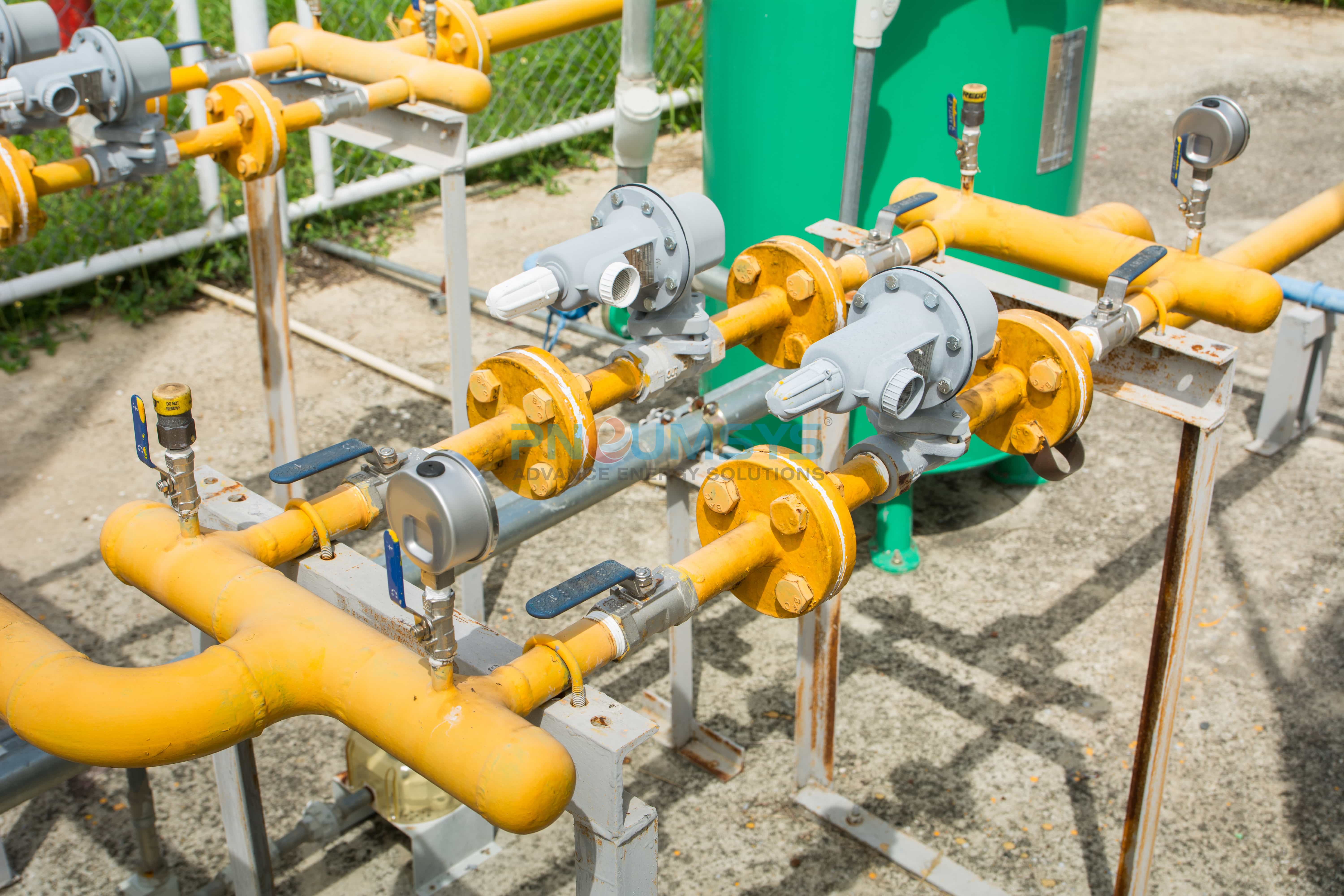
PNEUMSYS ADVANCE ENERGY SOLUTIONS (PAES) can design, engineer, model, and manufacture the complete solutions for your pipeline needs.
To give a scenario, offshores zones, onshore oil refineries, processing plants, pipelines, storage farms, and LPG/LNG plants all utilize or produce a wide range of hazardous flammable liquids and gases that can be detected by the gas detectors.
Consequently, pipelines that carry combustible hydrocarbons like oil, gasoline, and LNG/LPG (Liquefied Natural/Petroleum Gas), Liquid spills or fugitive gaseous emissions usually have a chance to go undetected and create hazardous concentrations of combustible and toxic gases, putting equipment, facilities, and personnel at risk.
How Does the Natural Gas Delivery System Work?Conceptually, Gas flowing from higher to lower pressure is the fundamental principle of the natural gas delivery system. The intensity of pressure in a pipeline is measured in pounds per square inch.
Starting from the well, at the first phase, the LPG gas is filled inside the "gathering" pipelines, which are like branches on a tree, getting larger as they get closer to the central collection point. From therein it goes to the Transmission System, Compressor Stations and to the Distribution System To enumerate, the advantages of the LPG pipeline solutions and installations at factories areas find intense applications.
1. The cost of transportation, which is very significant, is reduced favorably.
2. The Supply through pipelines is much reliable. And, that provide a path free of obstacles in road and rail transport.
3. In case of any underground pipelines, the land in which pipeline is laid could be still be used for agricultural use.
4. It also ensures supply in remote areas where roadways are not very good, also it provides a safe and secure supply for defense needs.
DESIGN OF LPG VESSELS <As per industry preference, the design pressure of LPG vessels shall not be less than the vapor pressure of the stored product as well as the maximum product design temperature shall be maintained.
Moreover, the additional pressure resulting from the partial pressure of noncondensable gases in the vapor space and the hydrostatic head of the product at maximum fill will also be considered.
In the forefront, both a minimum design temperature and a maximum design temperature shall be specified.
In the forefront, both a minimum design temperature and a maximum design temperature shall be specified.
LPG STORAGE VESSELS AND RELATED PIPING SOLUTIONAt first, spill containment shall be considered for all locations Besides, the ground under and surrounding a vessel used to store LPG shall be graded to drain any liquid spills to a safe area away from the vessel and piping.
However, in case diking around the vessel is to be used for spill containment, the diked area shall be designed according to the requirements.
Likewise, grading of the area under and surrounding the vessels shall direct any liquid leaks or spills to the edge of the diked area.
Additionally, the grading shall be at a minimum of I % slope. Within the diked area, grading should cause spills to accumulate away from the vessel and any piping located within the diked area.
PIPING REQUIREMENTS.To illustrate, the piping framework shall be a seamless, electric-resistance-welded, or submerged-arc-welded pipe. Pipe to be used in piping applications of 2 in. or smaller shall be seamless.
In addition, the number of joints of any type between the vessel and the first block valve shall be minimized.
And then, the welded joints shall be used where practical.
At the bottom, we shall pay importance that the number of flanged joints shall be minimized.
Then, the pressure tubing shall be constructed of steel. In case the tubing is exposed to a corrosive atmosphere, stainless steel shall be used.
FIRE PROTECTIONSpecifically, the fire protection provisions shall be based on the safety analysis of local conditions, exposure from or to other sites, availability of water supply, and effectiveness of fire brigades and fire departments
Specifically, the fire protection provisions shall be based on the safety analysis of local conditions, exposure from or to other sites, availability of water supply, and effectiveness of fire brigades and fire departments
REFRIGERATED STORAGEHere we take care of specific requirements for refrigerated LPG tanks. Also, unless specifically superseded or expanded upon in this section, the requirements of previous sections apply to refrigerated storage.
On one hand, the refrigerated LPG tanks shall not be located within buildings, within the spill containment areas of other flammable or combustible liquid storage tanks, or within the spill containment areas of pressurized storage tanks.
The second thing is that the refrigerated LPG tanks shall be provided with spill containment facilities. To prevent the accumulation of flammable material under or near a refrigerated LPG tank, the ground under and surrounding the tank shall be graded to drain any spills to a safe area away from the tank.
THERMAL CONSIDERATIONSFor safety measures, the tank foundation shall be designed to prevent 32°F or lower temperatures from penetrating the pad and soil. This limitation shall be accomplished by ventilation, insulation, heating systems, or a combination of these.
